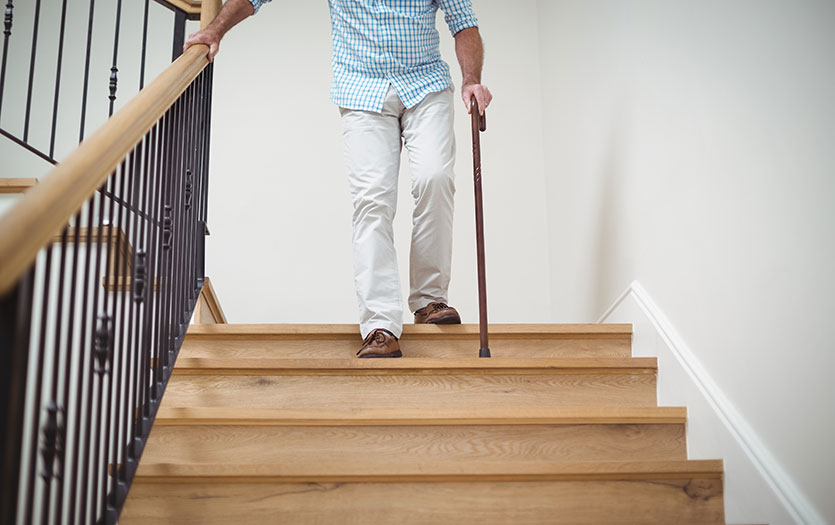
The Barta family has gone through what no one should ever have to face. A sick child is heartbreaking, but a rare disease diagnosis can change your whole world. With the help of their physician, Lynda Otto, MD, PPG – Pediatrics, they were able to identify their 17-month old son's illness. Today, they’re learning a new normal and are eager to bring awareness to his rare genetic disorder. They are choosing to celebrate Rare Disease Day by sharing his story.
What is Rare Disease Day?
Dr. Otto: Rare Disease Day takes place on the last day in February each year. The main objective of Rare Disease Day is to raise awareness among the general public and decision-makers about rare diseases and their impact on patients’ lives.
What does Rare Disease Day mean to you?
Dr. Otto: Building awareness is so important because one in 20 people will live with a rare disease at some point in their life. Despite this, there is no cure for the majority of rare diseases, and many go undiagnosed. Rare Disease Day improves knowledge among the public and encourages researchers and decision-makers to address the needs of those living with rare diseases.
What can you share about Wesley’s health journey?
Miranda: Dr. Otto has been our family’s pediatrician for 8 years. We were paired with her by chance but are so thankful we were because she has been such a blessing.
Wesley is our 7th child. He was 13 months old when the symptoms started. It was a Monday, Nov. 4th, I’ll never forget that day. My husband was changing Wesley’s diaper and he yelled for me. I came running downstairs and he showed me Wesley’s diaper – it was completely red. My initial thought was that it was my daughter’s diaper because she’s a girl and at that moment it was the only thing that made sense.
We immediately called Dr. Otto. Initially, we thought it was urine or possibly a bowel movement. Not knowing what was happening, we went ahead and changed him to a dairy-free diet, thinking it was his body clearing out. The next day we brought back a sample of his urine. It was dark red, so we knew it wasn’t a bowel movement.
The next day, I met with Dr. Otto. She pulled me into a room, and she was honest with me. She prepared me for everything, even the worst-case scenario. She hugged me and said, ‘We’re going to take this one day at a time.’
It took about 10 weeks, two surgeries and several specialists, but we finally found the answer. Wesley was diagnosed with Alkaptonuria.
What is Alkaptonuria?
Dr. Otto: Alkaptonuria is a rare, inherited, genetic metabolic abnormality. The frequency in the United States is 1 in 250,000 – 1 million live births. It is caused by a defect in the enzyme homogentisic 1,2 dioxygenase. This leads to a buildup of homogentisic acid in the body which results in dark red-brown urine or urine that may be yellow then turn color when exposed to air.
What happened after Wesley was diagnosed?
Miranda: Within a week of finding out Wesley’s diagnosis, Dr. Otto reached out to the National Institute of Health (NIH) and a doctor and geneticist named Wendy J. Introne. Dr. Introne wrote an article that included her contact information. Within two days Dr. Introne wrote her back and gave complete clearance for me to contact her, which I did. The following day, I received an email from her and two hours later she called me! I couldn’t believe this geneticist at the NIH made time to call me! After that, Dr. Introne became Wesley’s geneticist. She and Dr. Otto email frequently regarding Wesley’s case and his treatment.

Dr. Otto, what role did you, your colleagues, staff and Parkview play in Wesley’s journey?
Dr. Otto: As Wesley’s pediatrician, I started the initial evaluation to determine the cause of his red and brown urine. I helped the family navigate the many subspecialty evaluations that needed to be performed. I communicated and collaborated with all the physicians involved in making his diagnosis. I communicated regularly with Wesley’s family to provide updates and educate as we went along.
Miranda: Parkview is the gold standard. They set such a high bar. In our other experiences, we now look for people who are kind and approachable because Parkview is, and we will keep coming back.
As for colleagues, we didn’t realize it, but Tony GiaQuinta, MD, PPG – Pediatrics, had been following our journey the whole time. He’s the one that came up with the diagnosis!
Regarding Dr. Otto, she has been our collaborator and our rock from day one! She’s always prepared, has a plan and has always been honest with us! She knew with all the uncertainty that I needed small, attainable, mini-goals. Dr. Otto would always say, ‘Let’s just make it through the weekend and I’ll see you Monday!’ She’s showed us over and over that she’s on this journey with us and will be there every step of the way.
Both Dr. Otto and Dr. GiaQuinta, as well as their staff, are so kind and so relatable. They’re human and they make you feel the same way. They’re all amazing!
What does this mean for Wesley in the long-term?
Dr. Otto: The buildup of homogentisic acid over time can cause arthritis in the joints throughout the body. Alkaptonuria does not affect mental capacity and/or lifespan. In general, people with Alkaptonuria can lead normal lives.
Miranda: Thankfully, Wesley’s diagnosis isn’t life-threatening and it doesn’t hinder his mental or physical development. From infancy to early adulthood, the only symptoms we’ll see will be in his urine. It will cause joint issues and he will most likely notice it in his back first. At that point, X-rays will also be able to show the acid building up. Eventually, his joints will start to fuse together.
Arthritis is going to be Wesley’s biggest challenge. But to prepare him for that stage of his life, the geneticist has advised us to keep him away from high impact sports. The goal is to have him live a normal life, but we still have to be careful. Also, when he chooses a profession, we will need to help guide him toward a non-labor-intensive career. Nothing where he stands on his feet all day or has to operate heavy machinery.
What are the treatment options?
Miranda: For now, we focus on keeping him comfortable, monitoring his output and continue to do a urinalysis to make sure there’s no blood in his urine. Down the road, once he gets older and can show or tell us that he’s uncomfortable, we’ll start treating him with physical therapy and medication. The geneticist is keeping an eye on him from a distance and we’ll continue to see Dr. Otto.
What would you like to say to the Barta Family?
Dr. Otto: Wesley and his parents showed so much strength during this process. I am truly amazed by them. Their journey to diagnosis has been a beacon of light for other families with similar problems. There is hope that with persistence, the right answers can be found. It’s important not to give up. The Bartas never did.
What advice would you give other families going through a similar experience?
Dr. Otto: Rare diseases are less common, but they do exist. Through communication, collaboration and persistence we were able to find the answer and diagnosis for Wesley.
Miranda: Never give up, never take ‘no’ for an answer, and be your child’s biggest advocate. Remember to trust your instincts and take it one day at a time. Also, don’t forget to find joy amid all the trials.



